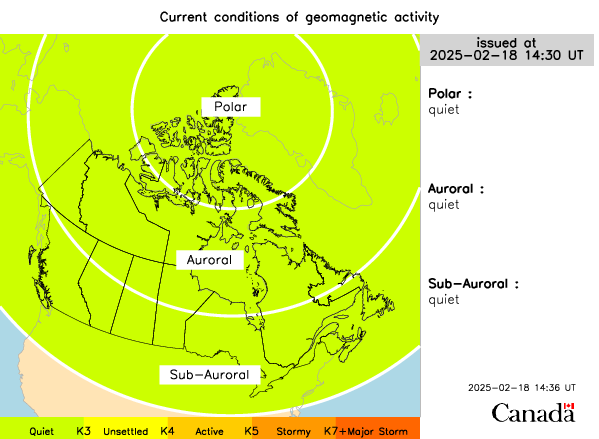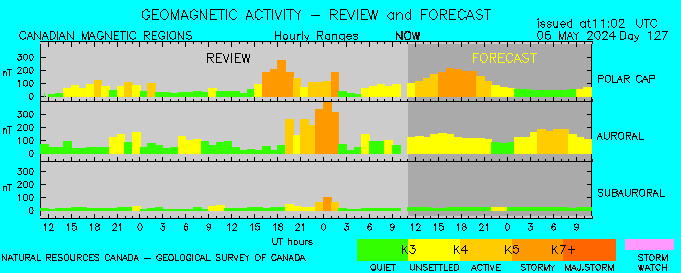Be on the Alert for Aurora Wednesday and Thursday
/Credit: Tom Kroeker
UPDATE: The CME reached the earth at 01:30 UT on Dec 10 but it unfortunately did not result in the predicted geomagnetic storm. A new solar cycle has just begun which means that there will likely be many CMEs in future months and more chances to see auroras.
The current UTC time:
The NOAA Space Weather Prediction Center has issued a watch for a Geomagnetic Storm Category G3. This means that places as far south as Oregon could see aurora tonight and tomorrow night. Excerpt from the alert issued on 2020 Dec 08 1506 UTC
Highest Storm Level Predicted by Day:Dec 09: G1 (Minor) Dec 10: G3 (Strong) Dec 11: G2 (Moderate)THIS SUPERSEDES ANY/ALL PRIOR WATCHES IN EFFECTNOAA Space Weather Scale descriptions can be found at
www.swpc.noaa.gov/noaa-scales-explanationPotential Impacts: Area of impact primarily poleward of 50 degrees Geomagnetic Latitude.Induced Currents - Power system voltage irregularities possible, false alarms may be triggered on some protection devices.Spacecraft - Systems may experience surface charging; increased drag on low Earth-orbit satellites and orientation problems may occur.Navigation - Intermittent satellite navigation (GPS) problems, including loss-of-lock and increased range error may occur.Radio - HF (high frequency) radio may be intermittent.Aurora - Aurora may be seen as low as Pennsylvania to Iowa to Oregon.UPDATE: The Coronal Mass Ejection (CME) from the sun arrived at approximately 1:30UT. Sometimes first contact with the CME doesn’t trigger a geomagnetic storm but a strong one develops hours later.
Here is the updated forecast from NOAA. UT is Universal Time in the forecast below.
:Product: 3-Day Forecast
:Issued: 2020 Dec 10 1230 UTC
# Prepared by the U.S. Dept. of Commerce, NOAA, Space Weather Prediction Center
#
A. NOAA Geomagnetic Activity Observation and Forecast
The greatest observed 3 hr Kp over the past 24 hours was 4 (below NOAA
Scale levels).
The greatest expected 3 hr Kp for Dec 10-Dec 12 2020 is 7 (NOAA Scale
G3).
NOAA Kp index breakdown Dec 10-Dec 12 2020
Dec 10 Dec 11 Dec 12
00-03UT 4 5 (G1) 2
03-06UT 3 6 (G2) 2
06-09UT 1 4 2
09-12UT 1 4 2
12-15UT 3 3 2
15-18UT 4 3 2
18-21UT 5 (G1) 3 2
21-00UT 7 (G3) 3 2
Rationale: G3 (Strong) and G2 (Moderate) geomagnetic storming is
possible 10 and 11 Dec respectively due to the possible still inbound
magnetic cloud from the 07 Dec CME.The two main factors on whether or not you can see aurora on any given night are the level of geomagnetic activity and where you are located. Of course weather and light pollution will also affect your ability to see aurora. More tips for viewing aurora can be found at the NOAA site.
Here are some forecasts that will help:
The OVATION Auroral Forecast from NOAA below shows probability of visible aurora at the current time. Be sure to reload if the image is not current. Day and night (dark) are indicated as well on the map to help you determine if the time is current.

Space Weather Canada also issues Regional Magnetic Conditions and Forecasts and has regional specfic forecasts. Below is the current conditions of geomagnetic activity. The higher the K value the better chance of seeing aurora.


The Space Weather Gallery has some stunning photos and particularly these “Pinkest of all pinks (Aurora)” photos from Markus Varik in Norway. Pink auroras are rare and occur when particles reach lower levels of the Earth’s atmosphere. See spaceweather.com for further information.
We will update this page as new information becomes available.



